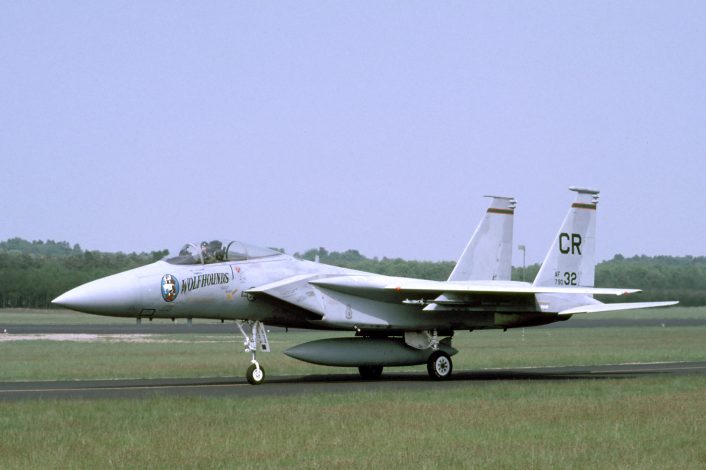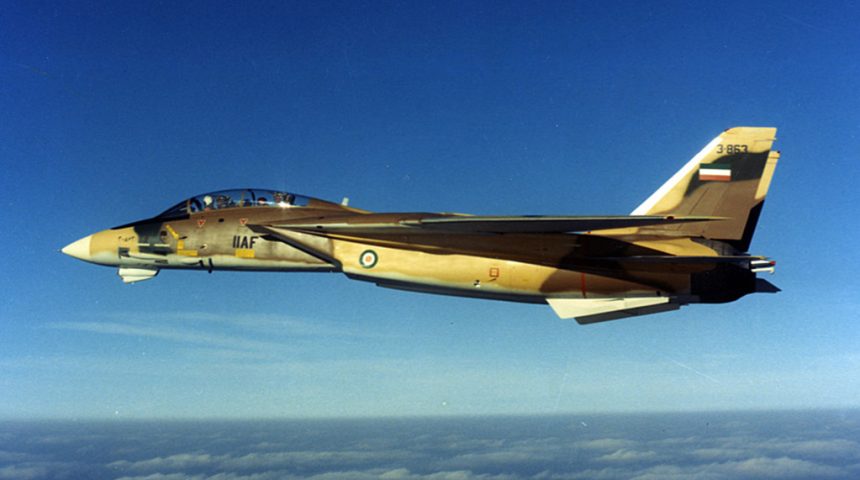Why the F-14 Tomcat won over the F-15 Eagle in Iran.
Despite all the skepticism about the actual airworthiness of Iran’s new stealth fighter “Qaher 313”, one thing is certain: Iran is still flying the iconic Grumman F-14. More than 6 years after its last flight with the U.S. Navy, the Tomcat is still in service in a small number of examples with the Islamic Republic of Iran Air Force (IRIAF), to such an extent, Iran has recently tested a brand new air-to-air missile dubbed “Fakour”, for the combat plane made famous by Top Gun.
In fact, 80 F-14s were ordered by the Shah and 79 were effectively delivered. The procurement of the Tomcat to Iran was very important not only for Grumman, which was facing serious cash flow problems due to the difficult development of the aircraft, but also for the future of the fighter itself, since at the time F-14’s program was affected by schedule slippage and cost overruns.
When the Shah announced his intention to replace the old F-4 Phantoms in service with the Imperial Iranian Air Force, it was clear that both the USAF’s new F-15 and the Navy’s F-14 would have had the same opportunity to become Iranian’s main fighter.
So, after briefings held by USAF and Navy personnel in the Shah’s palace in Tehran, Iranian officials decided that it would have been the flight demonstration at Andrews Air Force Base, near Washington DC, scheduled in July 1973, to determine which one between the two fighters, would be the best to satisfy the then Imperial Iranian Air Force’s requirements.
The flight demonstration was scheduled not to exceed 30 minutes from the first take off to the landing of the second aircraft.
The base was closed for that short time in which at the presence of the Shah, the two U.S. fighters had to fly their demonstration: it was decided that the USAF’s F-15, piloted by Irv Burrows (McDonnell Douglas’ test pilot), would have performed first, while Don Evans and Dennis Romano (Grumman’s test crew) with their F-14, would wait their turn after the Eagle.
While the F-15 taxied onto runway, Don and Dennis started engines of the Tomcat ahead of the schedule and burned down fuel in the warm up area during the Eagle demonstration, to reduce the difference in thrust to weight ratio between the two fighters. However F-15’s demonstration was spectacular, not only for the raw power of the aircraft but also for pilot’s skills: Burrows was a great pilot and that day, he showed all his ability.

The flight demonstration was the same for both aircraft: it consisted in a sequence of maneuvers beginning with a high performance take off followed by an Immelman turn and climb-out, then a descent to a high speed fly-by, two high-g low altitude turns followed by a slow speed fly-by in the landing configuration and last, the landing.
Since the F-15 has a higher thrust to weight ratio than the F-14A, the Eagle performed a really impressive flight profile during which it pulled an incredible 7-g 360 degree turn.
After the F-15 had finished its display, everyone was waiting for the underpowered F-14A demonstration: the Tomcat’s TF-30 engines would have not given to the aircraft the same thrust to weigh ratio of the Eagle.
However, during the F-15’s performance, Evans and Romano burned down a great quantity of fuel and now they had only 2,500 pounds of remaining gas: while this little quantity was only sufficient to accomplish their flight demonstration, 2,500 pounds was also one eight of the Tomcat’s internal fuel capacity and thanks to this fact the Tomcat had the same thrust to weight ratio of the Eagle.
At this point the F-14 had one thing that the F-15 didn’t have: variable geometry wings that would have made the difference for the grace of the flight demonstration.
Don and Dennis pushed both throttles to full zone five afterburner (which was the maximum afterburner thrust setting for TF-30 engine) and took off to perform the same demonstration of the F-15: the sequence of the maneuvers was just like the Eagle’s one, but the Tomcat’s crew, during the knife-edge pass, decided to sweep the wings from fully swept to fully forward and then they executed a turn at the maximum Tomcat’s performance, producing a large cloud of vapor off the wings due to the shock wave.

Then approaching the mid with the wings swept at 40 degree, the Tomcat went into a full afterburner 360 degree 8 ½ g turn accelerated to 400 knots, very impressive to see. To end the demonstration, Evans and Romano added a touch-and-go landing: when the main landing gears came in touch with the runway they inserted full zone five afterburners and the Tomcat climbed in vertical. At this point, while they had almost ran out of fuel, they made a spectacular carrier landing approach and they fully stopped in one thousand feet of runway.
Once the show ended, the Shah literally ignored the Eagle and walked directly towards the Tomcat speaking for some minutes with the crew still sat in the cockpit of the fighter: he’d chosen the Tomcat, saving the Grumman and assuring a future to the F-14.









